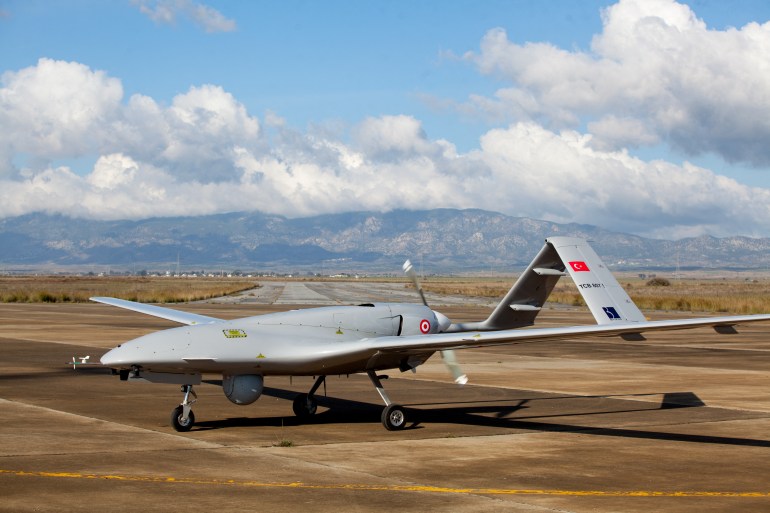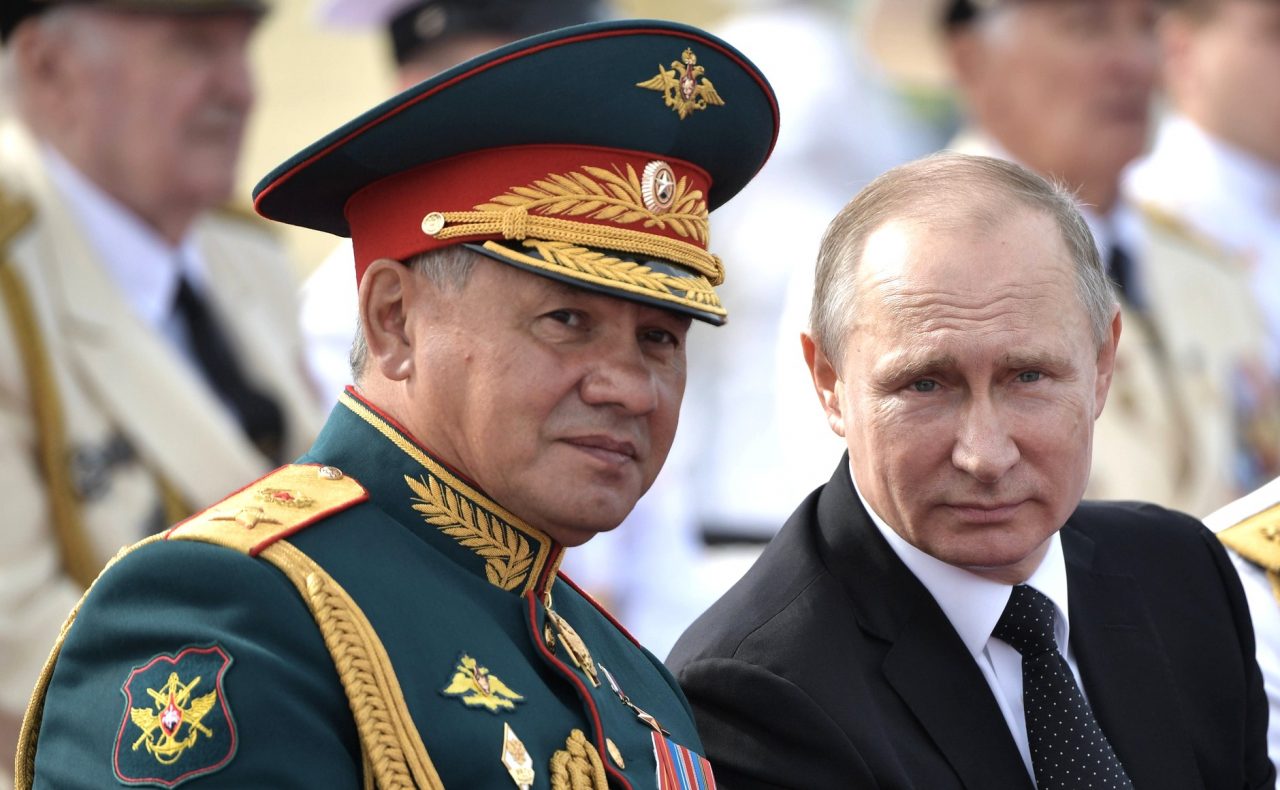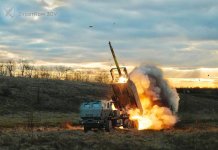The name ‘Bayraktar’ has become folklore of Ukraine’s resistance against Russian invasion, as the fleet of Turkish-made Bayraktar TB-2 drones belonging to the Ukrainian armed forces continues to eliminate Russian tanks and convoys.
The Ukrainians have composed a folk song about the TB2 drones, probably one of the first songs ever written about a combat drone which was uploaded to YouTube on March 1, 2022, and thus far has received about 262,347 views.
Commissioned by the Official Armed Forces of Ukraine, the song is titled, ‘Bayraktar’ and according to its English translation, here is how the first verse goes:
The invaders came to us in Ukraine
The uniform’s new, military chain
But their inventory melted in part
Bayraktar
Bayraktar
Today Ukraine’s TB-2 drone fleet is arguably the most potent force against Russian armed forces, as after more than a month into the war, the Ukrainian airspace remains contested, thanks in large part to Turkish-made drones.

Initially, many doubted if the TB-2s, their ground stations, and operators would survive the aerial strikes that preceded the Russian ground assault, but as it turns out, the drone force dispersed from its permanent bases, for example, Mykolaiv in southern Ukraine, to smaller facilities and managed to remain intact.
Reports suggest that by March 20, close to 60 tanks, air defense systems, helicopters, supply trucks, and trains were taken out by TB-2 strikes.
The real number remains unknown as of yet, as Ukraine wants to keep secret, where and how often its drones are striking, for operational reasons.
Ukrainians have conducted their drone campaign in stages. Firstly, the TB-2s were used to neutralize the short-range air-defense systems, such as Buks, Tors, and a Pantsir that were protecting Russian tank formations and supply convoys.
Ukrainian Bayraktar TB2 drone strike on a Russian Pantsir surface-to-air missile system. pic.twitter.com/wNs82EzB9P
— Visegrád 24 (@visegrad24) March 1, 2022
“Once they were free of Russian air defenses, the Ukrainians … began deploying their TB-2s for their other two important tasks—for reconnaissance and close-air-support,” wrote Tom Cooper, an author, and expert on the Russian military.
Moreover, there does not seem to be any limitation on TB-2’s operational area within the Ukrainian war zone as videos depicting drone strikes have come from as far south as Kherson and as far north as the Kyiv suburbs.
This suggests that Turkey has provided Ukraine with the latest version of the TB-2 with satellite-communications capability, as well as access to Turksat satellites because the alternative line-of-sight radio can take a drone only as far as 100 miles or so.

Sergey Shoigu
While, longer-range Russian SAMs—S-300s and S-400s— are still intact they seem to find it difficult to spot the TB-2s as Ukrainian operators fly their drones at low altitudes, below the horizon of long-range radars, until it’s time to attack. Even when they fly high, their small size and low noise also make it difficult for many radar operators and even the infrared sensors to detect them.
In the last 45 days, the Bayraktar TB2s have become much more than a piece of military equipment. The drones are now an inspiration for Ukrainians to stand firm against Russian aggression.
A puppy nicknamed Bayraktar has appeared at a police dog training center in Kyiv region. This German Shepherd puppy has become a real mascot for law enforcement. Bayraktar can feel when the enemy beings their approach, and can react a few minutes before the explosions begin. pic.twitter.com/lGzoGbG22x
— The New Voice of Ukraine (@NewVoiceUkraine) March 3, 2022
Ukrainian police forces named a German Shepherd puppy ‘Special Bayraktar’ for his ability to bark and warn others of incoming explosions, days after the Kyiv Zoo named a baby lemur ‘Bayraktar’.
A baby lemur was born at #Kyiv #Zoo.
It was named #Bayraktar – after the #Turkish unmanned combat aerial vehicle, which AF of #Ukraine use to struck enemy targets of #Russian occupants.#RussiaInvadedUkraine#StandWithUkraine#StopRussianAgression#StopPutin pic.twitter.com/F0Vm6SVIuZ— Emine Dzheppar (@EmineDzheppar) March 23, 2022
Turkish military analyst Arda Mevlutoglu equated the drones’ fight against larger Russian equipment with a David versus Goliath battle.
“This might be the reason why the Ukrainian military gives them so much emphasis in their public relations campaign,” Mevlutoglu said. “Footage showing destroyed equipment, particularly sophisticated equipment or slain enemy troops multiply the psychological effect. Even if not much equipment is destroyed, the dissemination of such imagery through social media creates a snowball effect, which is very useful for propaganda warfare.”
Over the years, the Bayraktar TB-2s have strike emerged as a persistent thorn on the Russian side as Turkish drones have been appearing on the opposite side of the battlefields in Syria, Libya, Azerbaijan, and now Ukraine increasing the odds significantly against Russia.
In late 2020, Azerbaijan successfully used Turkish drones during the Nagorno-Karabakh war to knock out no less than 567 tanks and other vehicles belonging to Armenia, a Russian ally that enabled Baku to absorb 40% of the disputed Nagorno-Karabakh region.
Likewise, during the Libyan civil war, Turkish drones helped the Government of National Accord (GNA) upend the siege of Tripoli by Khalifa Haftar-led Libyan National Army (LNA) which was heavily backed by Russia.
In Syria, Turkish drones have kept the Russian-backed forces from overtaking Idlib, the last rebel-held province in Syria.
- Written by Tanmay Kadam/EurAsian Times Desk
- Contact the author at etdesk@eurasiantimes.com
- Follow EurAsian Times on Google News




